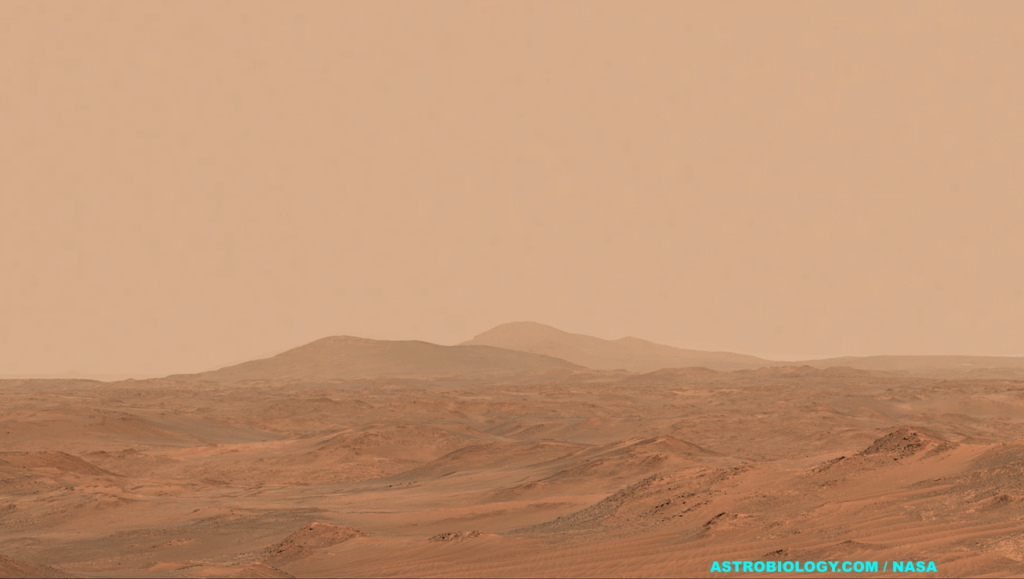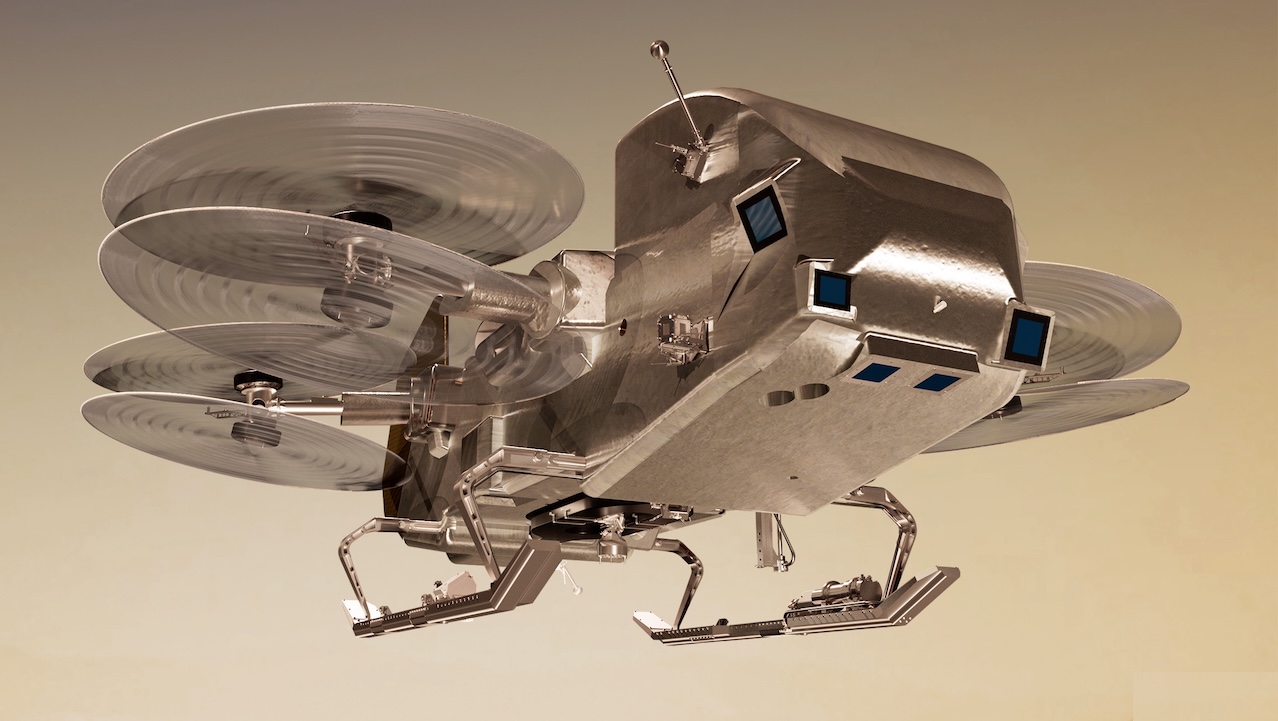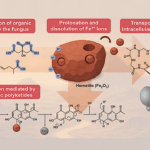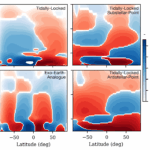Now Reading: Formation Of The Glycine Isomer Glycolamide (NH2C(O)CH2OH) On The Surfaces Of Interstellar Ice Grains: Insights From Atomistic Simulations
-
01
Formation Of The Glycine Isomer Glycolamide (NH2C(O)CH2OH) On The Surfaces Of Interstellar Ice Grains: Insights From Atomistic Simulations
Formation Of The Glycine Isomer Glycolamide (NH2C(O)CH2OH) On The Surfaces Of Interstellar Ice Grains: Insights From Atomistic Simulations
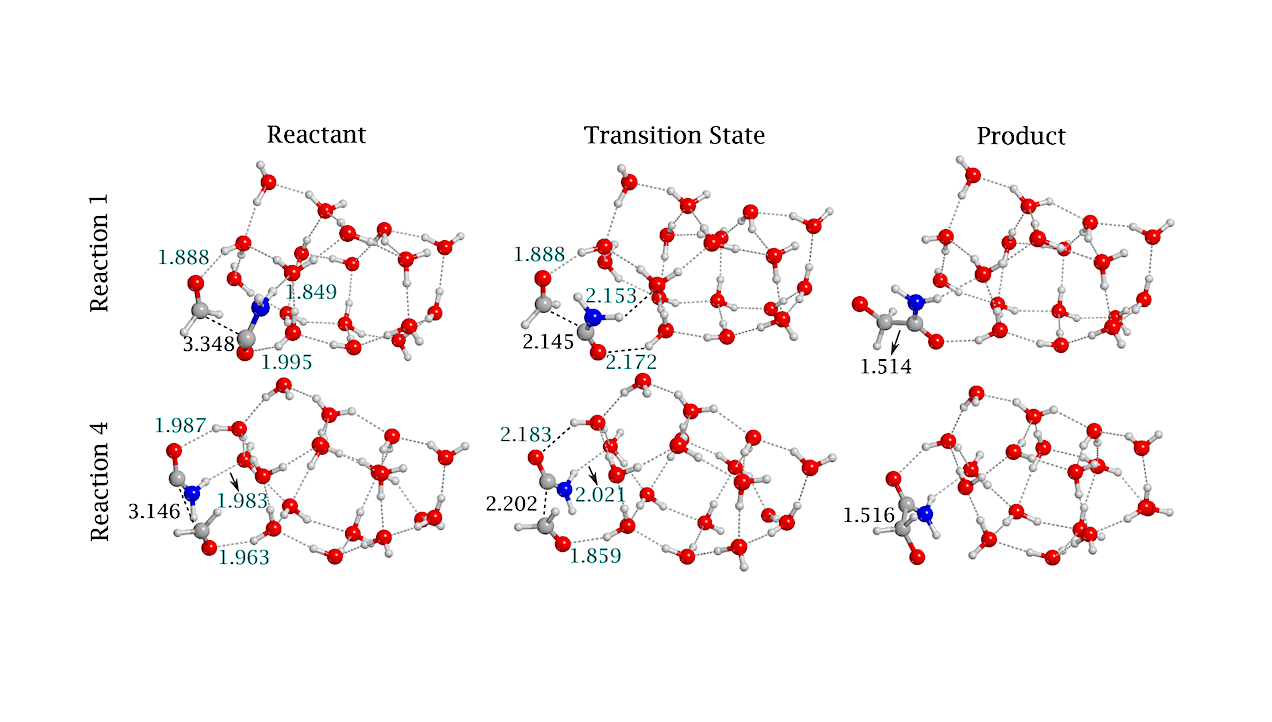

BHLYP-D3(BJ)/ma-def2-TZVP optimized structures of reactant, transition state, and product for Reactions 1 and 4 (those presenting the highest and the lowest energy barrier, respectively). Distances are in Å, those in blue refer to H-bond lengths. Color code: red, oxygen; light gray, hydrogen; gray, carbon; blue, nitrogen. Geometries for Reaction 2 and 3 are available in the Appendix. — astro-ph.GA
Syn-glycolamide, a glycine isomer, has recently been detected in the G+0.693-0.027 molecular cloud. Investigations on its formation in the interstellar medium could offer insights into synthetic routes leading to glycine in prebiotic environments.
Quantum chemical simulations on glycolamide (NH2C(O)CH2OH) formation on interstellar ice mantles, mimicked by a water ice cluster model, are presented. Glycolamide synthesis has been here modeled considering a stepwise process: the coupling between formaldehyde (H2CO) and the radical of formamide (NH2CO∙) occurs first, forming the glycolamide precursor NH2C(O)CH2O∙, which is then hydrogenated to give anti-glycolamide.
We hypothesize that anti-to-syn interconversion will occur in conjunction with glycolamide desorption from the ice surface. The reaction barrier for NH2C(O)CH2O∙ formation varies from 9 to 26 kJ mol−1, depending on surface binding sites. Kinetic studies indicate that this reaction step is feasible in environments with a T>35 K, until desorption of the reactants. The hydrogenation step leading to anti-glycolamide presents almost no energy barrier due to the easy H atom diffusion towards the NH2C(O)CH2O∙ intermediate.
However, it competes with the extraction of an H atom from the formyl group of NH2C(O)CH2O∙, which leads to formyl formamide, NH2C(O)CHO, and H2. Nonetheless, according to our results, anti-glycolamide formation is predicted to be the most favored reactive channel.
Jessica Perrero, Silvia Alessandrini, Hexu Ye, Cristina Puzzarini, Albert Rimola
Comments: 16 pages, 12 figures, accepted for publication in Astronomy & Astrophysics
Subjects: Astrophysics of Galaxies (astro-ph.GA)
Cite as: arXiv:2504.17372 [astro-ph.GA] (or arXiv:2504.17372v1 [astro-ph.GA] for this version)
https://doi.org/10.48550/arXiv.2504.17372
Focus to learn more
Submission history
From: Jessica Perrero
[v1] Thu, 24 Apr 2025 08:44:07 UTC (22,265 KB)
https://arxiv.org/abs/2504.17372
Astrobiology, Astrochemistry,
Stay Informed With the Latest & Most Important News
Previous Post
Next Post
-
 01From Polymerization-Enabled Folding and Assembly to Chemical Evolution: Key Processes for Emergence of Functional Polymers in the Origin of Life
01From Polymerization-Enabled Folding and Assembly to Chemical Evolution: Key Processes for Emergence of Functional Polymers in the Origin of Life -
 02Panasonic Leica Summilux DG 15mm f/1.7 ASPH review
02Panasonic Leica Summilux DG 15mm f/1.7 ASPH review -
 03How New NASA, India Earth Satellite NISAR Will See Earth
03How New NASA, India Earth Satellite NISAR Will See Earth -
 04And Thus Begins A New Year For Life On Earth
04And Thus Begins A New Year For Life On Earth -
 05Astronomy Activation Ambassadors: A New Era
05Astronomy Activation Ambassadors: A New Era -
06SpaceX launch surge helps set new global launch record in 2024
-
 07Two Black Holes Observed Circling Each Other for the First Time
07Two Black Holes Observed Circling Each Other for the First Time












